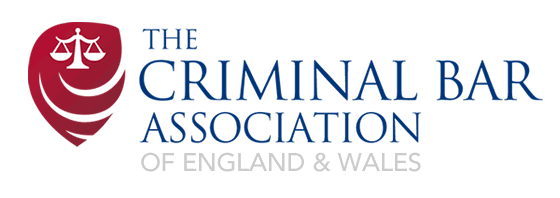Monday Message 18.11.19
Chair’s Update:
Caroline Goodwin QC

LAW AND ORDER CANNOT BE IGNORED:
The Institute for Government is the leading think tank, working to promote better government. On 11th November 2019, it published “The Performance Tracker 2019”. This document makes for interesting but sorry reading. Many of the areas of concern we have been highlighting have been identified. Here is just a snapshot but it is exactly what we have been saying. The question is will anyone react?
POLICING:
- Victims are becoming less satisfied and fewer offences are resulting in charges.
- Complex crimes requiring more police resources – such as child exploitation and abuse – are on the rise. With reduced resources, the police are increasingly prioritising more violent or easier-to-solve crimes but are taking longer to charge.
- The aim of increasing the number of officers by 20,000 by 2022 will be difficult. If the number of officers leaving the force in the next few years remains similar to that in 2018/19, the police will need to recruit around 46,000 officers to achieve a net increase of 20,000 officers in three years.
- If crime rates continue to rise as quickly as they have in recent years, the government may need to spend an extra £3.5 billion on top of what is currently planned.
- In 2018/19, the spend on police was 16% less in real terms than in 2009/10, despite an uptick in the last year.
- Complex, serious and organised crimes, ranging from human trafficking to sexual crimes against children, are becoming more common and can be more challenging.
- The number of police-recorded sexual exploitation and abuse crimes against children under the age of 16 went up by 259% between 2009/10 and 2018/19, from 17,402 to 62,409 cases.
- In 2018, the number of police officers per 100,000 people in England and Wales had declined to 199, compared with 247 per 100,000 in 1996.
- A Freedom of Information request revealed that the number of detectives working in major crime and murder units fell by at least 28% between 2010/11 and 2017/18.
- A Freedom of Information request to the Metropolitan Police revealed internal guidance for officers to consider the proportionate level of investigation, stressing the need to focus on serious crime and incidents which are more likely to be solved. Crimes were being unallocated and some risk assessments downgraded.
- In 2019, fraud is seldom seen as a priority. It can be difficult to prove even though people have a higher likelihood of being victims of fraud than of many other crimes.
CRIMINAL COURTS:
”Criminal courts in the UK are under pressure. A reduction in spending and a rise in case complexity have forced the courts to adapt and reform – a process that has prompted widespread concerns about the quality of justice now being dispensed across the UK. This is, in part, because courts have been forced to make efficiencies. HMCTS spending was 18% lower in real terms in 2018/19 than it was in 2010/11. And while the number of cases that the criminal courts received fell in that time, the cases themselves have increased in complexity. This has required the courts to make savings to meet demands….
The government’s promise to increase police resources is likely to mean that demand will also increase over the next few years. This will require more spending than the government’s plans currently imply if the performance of the courts is to be maintained”.
- Government funding for HMCTS was 32.0% lower in real terms in 2018/19 than in 2010/11. To meet the shortfall HMCTS increased fees in other areas to protect its ability to spend. HOWEVER, this is a trick that it is unlikely to be able to repeat. In 2017, the Supreme Court ruled that fees in employment tribunals were excessive and were having an effect on access to justice.
- Since 2012/13 the numbers of ‘either way’ and ‘indictable only’ cases had fallen but looking only at the number of cases received, does not fully reflect the demand on the Crown Court.
- 12.5% of trials completed in the Crown Court in 2018/19 were for sexual offences, but those cases took up more than 20% of the total hearing time. In 2018 only 35.5% pleaded guilty.
- The reduction in cases is counterbalanced by an increase in complexity, but the vagaries of charging such as the furore around rape cases as evidenced by only 37% of cases sent to CPS between April and September 2018, compared with 62% in 2013-14, we say that means, that the figures are easily skewed.
- In 2018, 10% of those with representation in the Crown Court, had their case completed in one hearing, while for 16% it took six or more hearings. The equivalent shares for those without representation were 6% and 22% respectively.
- In 2018, 7.7% of defendants in the Crown Court did not have an advocate at their first hearing, compared with 4.9% in 2010.
- Overall, increases in complexity mean that demand has fallen by less than caseloads alone imply.
LEGAL AID CUTS REMAIN CONTROVERSIAL:
- Spending fell by 34.4% in real terms between 2010/11 and 2018/19, with the number of recipients falling from 560,000 (130,000 in the Crown Court) to 295,000 (85,000 in the Crown Court) over the same period.
- Removing legal aid has undermined ‘equality of arms’ in the courts as a fundamental principle, as litigants in person usually cannot compete when coming up against experienced lawyers.
- Cuts to legal aid remuneration for lawyers have reduced the number and quality of criminal lawyers willing to undertake legal aid work, especially in some places where there are now barely any young defence practitioners
- The total number of judges has fallen notably over the course of the past decade, with a combination of concerns about pay and workload leading to serious morale and recruitment problems across the judiciary. In 2018/19, there were 1,777 salaried judges, 8.7% fewer than the 1,947 in 2010.
- In 2018/19, the court estate comprised 338 court and tribunal hearing centres, including 161 magistrates’ courts and 84 Crown Courts. Half of the magistrates’ courts open in 2010 have been closed (162 out of 323). Eight out of 92 Crown Courts have been closed
- Concern with doing this, is that the courts need to be able to handle more cases if resource constraints on the police and CPS lift, as has now been announced for 2020/2 ie an increase in budget to both police and CPS
- There are concerns that the remaining court buildings are run-down and outdated.
In his 2018 annual report, the Lord Chief Justice said:
“The public should not be expected to visit dilapidated buildings and neither is it reasonable to expect staff or judges to work in conditions which would not be tolerated elsewhere… the backlog of urgent maintenance needed to ensure that all our buildings are in a decent condition will only be reduced by the injection of substantial funds”
- HMCTS highlighted in its latest annual report that “we will be investing in larger-scale structural projects such as making sure that roofs aren’t leaking and lifts are being fixed”.
- Whilst there has been a fall in the number of cases that the Crown Court deals with, there has been an increase in hearing times. The average hearing time for a Crown Court trial increased by 51.7% between 2010/11 and 2018/19
- Cases that are ineffective due to problems with court administration or interpreter problems in the Crown Court increased from 3.1% to 3.5% over the same period. Most commonly this is because courts list too many cases on a particular day, meaning defendants and witnesses have to come back another day.
- Court closures mean that 35% of people now live further away from their nearest court than they did in 2010.
- Many of the recent cost savings have been made by reducing spending on staff and judges, as well as legal aid cuts affecting private sector lawyers’ remuneration. If morale does not improve, the efficiency savings achieved so far may not be sustainable.
I make no apology for repeating the above information. Litigants in person lengthen hearings. Witnesses are paid no heed. The savings are de minimis. All of the above demonstrates how far behind we have fallen. Has any political party as yet examined the parlous state the criminal courts are in and how they will operate? Or will it just be another sticking plaster? Investment needs to take place and integrate across the system. There needs to be thought.
INCREASE IN SITTING DAYS:
Finally, we have an increase in sitting days, so the projections in the above report will have to be amended. We have an extra 700 days. It is simply not enough. I had a positive discussion for over an hour last week with Susan Acland – Hood who outlined the wider plan for the courts and we are going to meet her team further, so that we can report the initiatives back to you. The department is like so many under pressure, but it is only if you keep reporting in the problems that we will be able to make headway. Those cases which should be prioritised need to be highlighted. To make this work, courts need to be sitting. So, It is with some incredulity that I report that last week certainly on one day there was no sitting at all in Cambridgeshire. How is this justified?
The bumper edition of court disasters will be in next weeks edition. Keep sending your examples in to the link. They will be published. Likewise, vagaries in fees are very much needed. SEND THEM IN PLEASE
FILM OF THE WEEK:
A MATTER OF LIFE AND DEATH…awesome viewing.
Onwards and upwards
